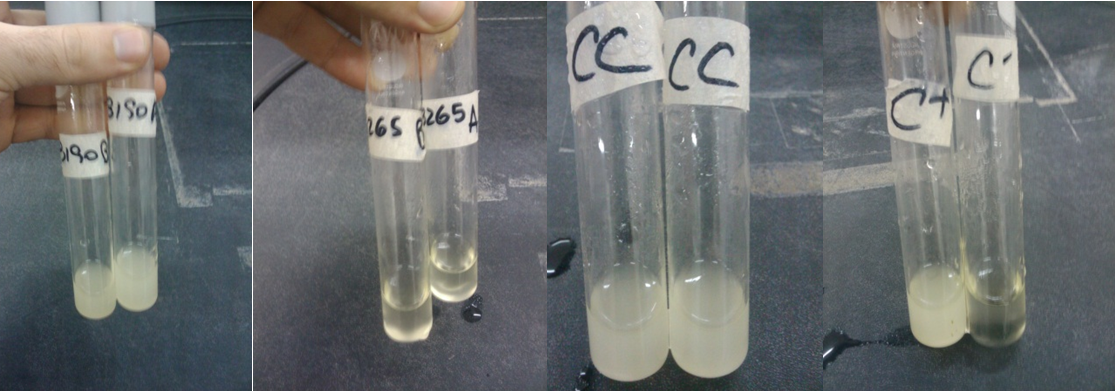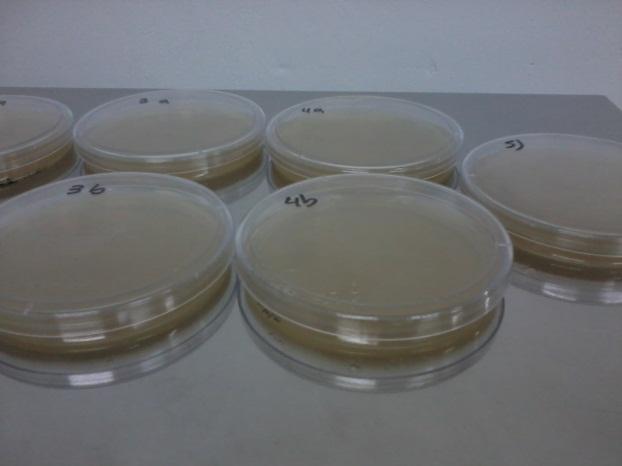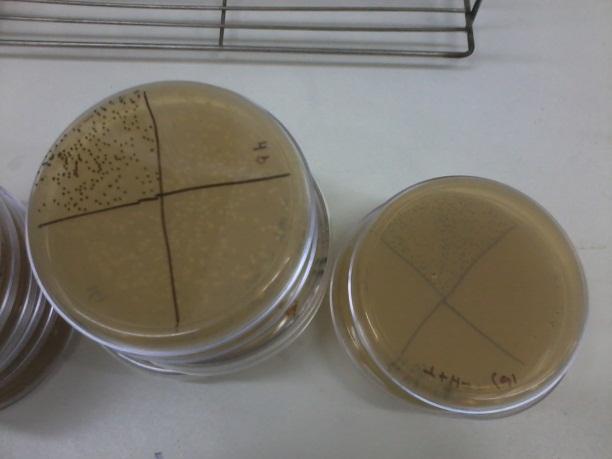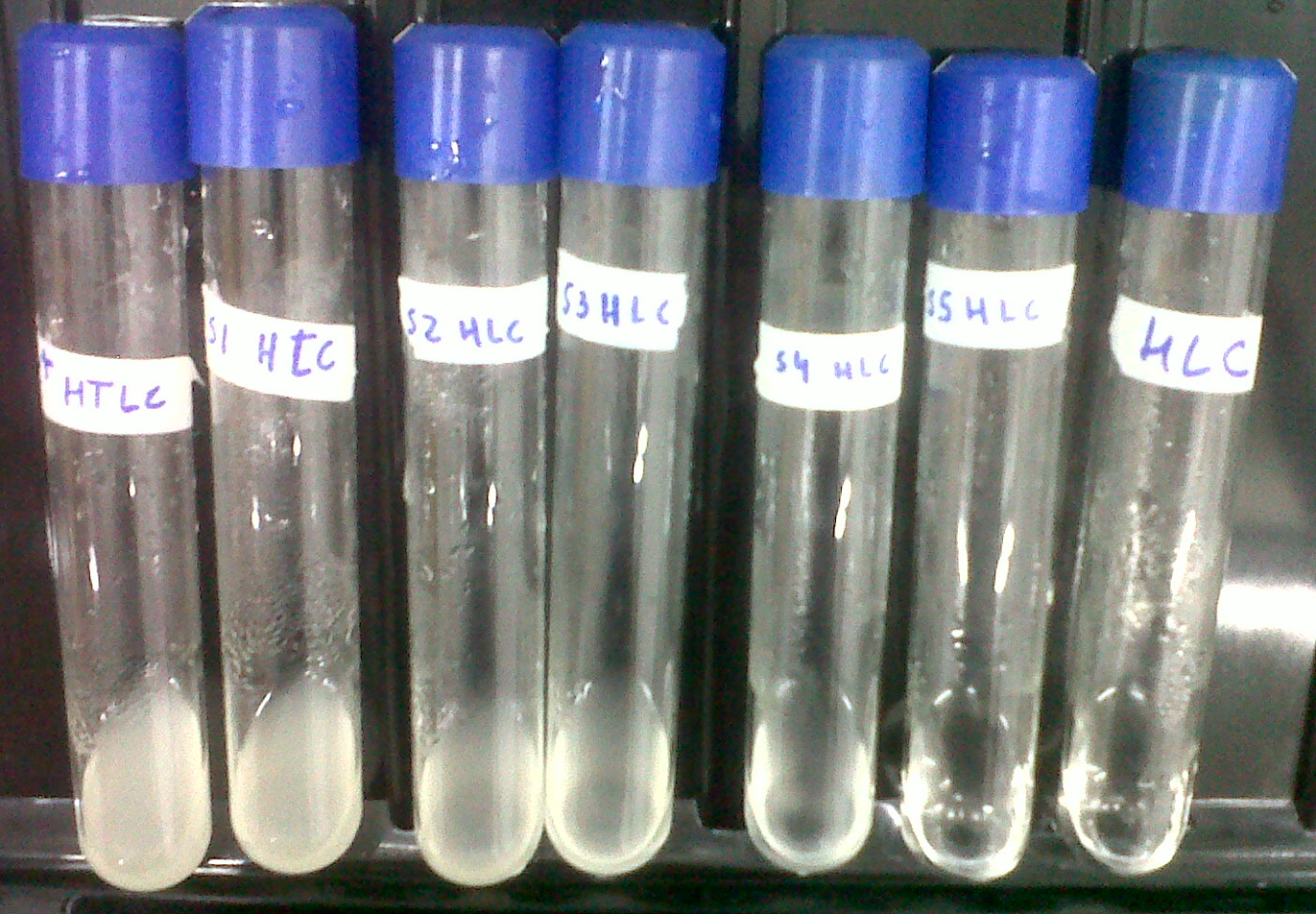Team:Buenos Aires/Results/Strains
From 2012.igem.org

Description of strains
Through our experiments we worked with the following strains kindly provided by Alejandro Colman-Lerner's Lab:
| Strain ID | Relevant Auxotrophies | Fluorescence | Used as |
|---|---|---|---|
| TCY 3043 | (-H-T) | No fluorescence | Negative control |
| TCY 3190 | (+H-T) | YFP + (Induced CFP) | For coculture |
| TCY 3265 | (-H+T) | CFP | For coculture |
| TCY 3154 | (+H+T) | CFP +(induced YFP) | Positive Control |
Table: Hystidine (H) and Tryptophane (T) auxotrophies per strain, type of fluorescence and description of most common utilization during the experiments.
Nearly 15 other similar strains were evaluated and discarded due to several reasons (low screening potentiality; requirement of hormones for fluorescence induction; high reverting rate of auxotrophies, among others)
Foto 1
Fluorescence screening
We measured Strains 3281 (YFP) and 3265 (CFP) and got a spectrum of each one prooving that these strains can be distinguished by their fluorescence in culture.
Graficos 1
Auxotrophy confirmation
Several times during the experiments we control and checked if the auxotrophies in the selected strain were functional by plating all of them in medium deficient in aminoacids (-H; -T; -H-T and control +H+T). We observed differential growth according to expected due to the description of each strain in point a)
Foto 2,3,4,5
Figures a-d: Auxotrophies check. Plate a : medium complete. Plate b: medium without T. Plate c: medium without H and T. Plate d: medium without H.
We observed all the strains grew in Plate a and only 3154 (+H+T) grew in Plate c. In plate B, only those strains able to synthesize T grew (3265 and 3154) and in Plate d, only those able to produce H grew (3190 and 3154), as expected. This means our strains work according to their description. We did this several times during the months to check for reversions or contaminations.
Coculture in liquid medium: growth
We used for these experiment TCY3190(H+T-) and TCY3265(H-T+) Positive control: TCY3154 (H+T+) and negative control TCY3043(H-T-)
At different initial OD and proportions
Cultures were set at different initial concentrations (0.25, 0.1 and 0.01) and proportions (1:1; 1:9; 9:1). After 24 hs, we measured OD with the use of a spectrophotometer (two replicas) and we calculated the mean OD and a Growth factor (as Mean OD en time 1 over Initial OD time 0).
| Coculture Proportion (H+T-):(H-T+) | Initial OD(t=0) | OD1 (t=1) | OD2 (t=1) | dilution used for measure t=1 | Mean OD | Growth Factor |
|---|---|---|---|---|---|---|
| 01:01 | 0,25 | 0,32 | 0,314 | 10 | 3,17 | 12,68 |
| 09:01 | 0,25 | 0,148 | 0,144 | 10 | 1,46 | 5,84 |
| 01:09 | 0,25 | 0,138 | 0,189 | 10 | 1,635 | 6,54 |
| 01:01 | 0,1 | 0,109 | 0,169 | 10 | 1,39 | 13,9 |
| 09:01 | 0,1 | 0,04 | 0,045 | 10 | 0,425 | 4,25 |
| 01:09 | 0,1 | 0,067 | 0,053 | 10 | 0,6 | 6 |
| 01:01 | 0,01 | 0,067 | 0,061 | 1 | 0,064 | 6,4 |
| 09:01 | 0,01 | 0,056 | 0,05 | 1 | 0,053 | 5,3 |
| 01:09 | 0,01 | 0,074 | 0,073 | 1 | 0,0735 | 7,35 |
Graficos 2,3,4
As shown in graphs there is a basal growth that does not depend on the initial OD or strain proportion, of a growth factor of 6 approximately. However we observed a much higher growth at the proportion 1:1 when the initial OD 0.25 and 0.1. Therefore we can assume that at these proportions there is a natural cooperation between the strains and that should be the level of growth that we would like to assess through our bioengineering. Besides we would like to be able in the future to tune the strains in order to be able to obtain in the proportions 9:1 and 1:9 similar results to those obtained in the 1:1, at our own will.
At the same initial OD: 0.2, followed over time
We set the same cultures and cocultures as in point i), but starting all of them at the same OD: 0.2 and we followed them over 2 days. At day 1 we took pictures of them and at day 2 we measured the final OD.
| Strain | Day 0 | Day 2 |
|---|---|---|
| TCY 3190 (-H+T) | 0,2 | 2,92 |
| TCY 3265 (+H-T) | 0,2 | 0,19 |
| Coculture of strains (TCY 3190- TCY 3265) | 0,2 | 2,76 |
| Negative control (TCY 3043 / -H-T) | 0,2 | 0,6 |
| Positive Control (TCY 3154/ +H+T) | 0,2 | 2,54 |
Grafico 5

|
| Caption? |
We repeated this experiment 4 times with different modifications: increasing the amount of days for up to a week, measuring every 12 hs instead of every 24 hs and using different strains. However, bacterial contaminations and the high rate of revertants prevented us from getting to a valid results in those cases, whereas the experiment up to day 2 always worked correctly. This denotes that we should assess the problem of contamination (for example including ampicilin in the cultures) and revertant rate (revising the design of the experiment or looking for more stable strains) as the impossibility to go further than day 2 may put limitations to some applications of the Synthetic Community.
Coculture in Agar and Revertant mutation control
Through this experiment we aim to quantify the rate of revertants of each strain.
We used Petri dishes with agar medium with (+) and without (-) Trp and His as shown in the following table.
We started a culture of each strain in synthetic complete medium, measured its OD 24 hs after the culture initiated, replaced the synthetic complete medium for one lacking both H and T (to avoid residual growth) and plated 10 6 cel or 102 cel as shown by the following table (we considered OD600: 1 represents 3.10 7 cells). At the same time, 3 controls (one for each strain) were carried in YPD complete medium to check the viability of each strain separately.
| Medium H | Medium T | Grass (10 6 cel) | Seed (102 cel) | Description of experiment | Results after 3 days - Replica 1 | Results after 3 days - Replica 2 |
|---|---|---|---|---|---|---|
| (-) | (+) | (-) | Strain –H+T | Control of His revertants | 7 | 7 |
| (+) | (-) | (-) | Strain +H-T | Control of Trp revertants | 2 | 7 |
| (-) | (-) | Strain +H-T | Strain –H+T | Coculture; we expect to see natural cooperation | 960 | 800 |
| (-) | (-) | Strain –H+T | Strain +H-T | Coculture; we expect to see natural cooperation | 500 | 712 |
| (-) | (-) | (-) | Strain +H+T | Viability of yeasts in medium | 171 | (-) |
Table: Shows description of each plate content and results in number of colonies counted by plate at day 3. YPD control results plates are not shown in the table.

| 
|
| Petri Dishes | With marks of the counting of colonies |
Discussion of results
The viability of the strains was high as expected as well as the viability of a control positive strain in the –H-T medium. As shown in Table, we have a very low, but existent, number of revertants from both his and trp auxotrophy strains. This number should be taken into account when seeing results from coculture growth after several days, given that the rate of revertants in liquid medium may as well be of the same numerical order. Growth in coculture was high and near to the number we expected as result of natural cooperation, which confirms that there is a natural way in which the strains cooperate by sharing each other´s missing aminoacids. This is encouraging since we know confirmed that each strain is able to see and relate with each other and therefore we have an open communication way over which to work and control with engineering.
Coculture in liquid medium: screening of strain proportion
We prepared cultures of strains +H-T and –H+T and measured their fluorescence levels during the exponential range of the growth curve. We managed to do this by making serial dilutions of cultures and letting them grow overnight, till they reached up to an OD: 0.2 at 9.00 am. This was prepared in order to avoid the interference fluorescence of dead yeasts in a saturated culture (which is at OD:0.6 – reaching the stationary OD). At 9 am, we measured the fluorescence of each strain and its OD and we mixed the strains in different proportions so as to be able to create a curve where we could calculate the OD by knowing the fluorescence spectrum of a coculture.
Falta grafico Ale
Measurement of Trp in medium and Basal Production
We made serial solutions of Trp in medium and measured it using a fluorospectrophotometer.
Grafico de TRP Mario
Results
As can be seen from the graph the screening of the concentration of the Trp in medium describes an almost lineal function. Through this experiment we can be sure that we would be able to measure increase of Trp in medium as it is exported from the cells, within the biological range of export.
Growth dependence on the Trp and His concentrations
A important thing to characterize of the system is the dependence of the growth rate of the culture with the concentration of the crossfeeding aminoacids, tryptophane (Trp) and histidine (His). To do this we measured the final OD after an overnight growth in medium with different concentrations of Trp and His.
We used strain ACL-379, that is auxotroph for both Trp and His. We prepared serial dilutions of SC medium in –T and –H medium, therefore creating two curves: one with decreasing concentrations of Trp and the other with decreasing concentrations of His. We then inoculated equal amounts of ACL-379 in each tube and incubated them overnight at 30°C with agitation. We took a picture of each tube and measured the OD600 reached by each culture.
| Medium | OD Replica 1 | OD Replica 2 |
| SC | 0,001 | (-0,0036) |
| HLC | (-0,003) | (-0,019) |
| S1 HLC (1:10) | 0,256 | 0,217 |
| S2 HLC (1:10) | 0,301 | 0,311 |
| S3 HLC (1:10) | 0,154 | 0,155 |
| S4 HLC | 0,393 | 0,409 |
| S5 HLC | 0,013 | 0,003 |
| TLC | (-0,008) | (-0,012) |
| S1 TLC (1:10) | 0,368 | 0,384 |
| S2 TLC (1:10) | 0,207 | 0,2 |
| S3 TLC (1:10) | 0,117 | 0,097 |
| S4 TLC | 0,47 | 0,432 |
| S5 TLC | 0,238 | 0,257 |
| HTLC (1:10) | 0,488 | 0,491 |
Results
As expected the growth has a sigmoidal relationship with the concentration of Trp and His, when plotted in semilogarithmic scale. We call EC50 the effective concentration of each aminoacid at which the culture reaches 50% of the maximal growth. We considered these values as proxies of the Khis and Ktrp parameters of the mathematical model, which can be used to estimate the secretion rate of each aminoacid needed to get effective crossfeeding.
SC: Synthetic complete medium with all the aminoacids. It was used as a blank for the spectrofluorometer
HTLC is the culture in the medium with all the required aminoacids
S(Number) are the serial dilutions of HTLC with medium that lacks Histidine (HLC) and Tryptophane (TLC)
HLC and TLC are mediums without cells.

| 235px NO ME DEJA SUBIR LA 2da foto no se pork |
 "
"